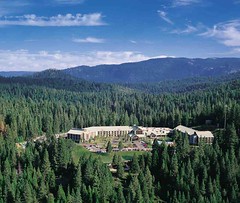It’s an idea I’ve had knocking around in my head for a while, or at least since I started writing for this blog. And it may be an idea whose time has come. But given my somewhat limited technological abilities, someone else is gonna have to make it happen.
While pondering the various ways technology might be employed to improve the life of the everyday man or woman on the street, it occurred to me that while exploring the various uses for mobile technologies affairs of the heart were being overlooked. Since scores of people carry mobile phones these days, that allow them to do everything from playing their favorite music via satellite radio to watching their favorite shows, it seems like a no-brainer to use the same technology to track down potential candidates for significant-other status. If I thought of it, surely someone out there with greater technical acumen than me has thought of it and tried to make it a reality.
Enter the Cellular Love Detector. It works like this: dial the access number, the number of your latest crush, and talk as you would normally do while the Love Detector does it’s magic and spits out a report.
 Using the Love-Detector Cell Service is as simple as dialing the access number, and your friend’s phone number right after… Once the conversation starts, all you need to do is have a NORMAL conversation. Speak about work, homework, movies or any other thing. …
Using the Love-Detector Cell Service is as simple as dialing the access number, and your friend’s phone number right after… Once the conversation starts, all you need to do is have a NORMAL conversation. Speak about work, homework, movies or any other thing. …
During the call, our server will monitor the excitement levels and other related parameters your friend is demonstrating, and will calculate the "Love-Level" as detected in the conversation. Once the conversation has ended, the final report will be sent to your cellular phone using SMS or audio message! The final report is not only about the "Love-Level", and includes other parameters, like "Concentration", "Embarrassment" and even "Anticipation".
Sounds like an interesting idea, and one that may be useful to folks who are impaired when it comes to detecting mutual admiration. But I don’t think it goes far enough.
Look, we already know how easy it is to track someone down using various technologies. We can use GPS to track down lost pets and roving gang members. We can use GPS and cell phones to track down wandering teenagers. And I just read that it’s pretty easy to track anybody who’s carrying a cell phone, whether they make calls or not.
Most people know that when they make a mobile call—during a 911 emergency, for example—authorities can access phone company technology to pin down their location, sometimes to within a few feet.
A lesser-known fact: Cell phone companies can locate you any time you are in range of a tower and your phone is on. Cell phones are designed to work either with global positioning satellites or through “pings” that allow towers to triangulate and pinpoint signals. Any time your phone “sees” a tower, it pings it.
Here’s a more straightforward explanation.
Real-time tracking of cell phones is possible because mobile phones are constantly sending data to cell towers, which allows incoming calls to be routed correctly. The towers record the strength of the signal along with the side of the tower the signal is coming from. This allows the phone’s position to be easily triangulated to within a few hundred yards.
The technology is already within reach of consumers. You can sign up for services like AccuTracking, World Tracker, or ULocate. For that matter you can build your own. So, the genie is out of the bottle and unlikely to go back in.
Why not put it all together in the service of matchmaking? The Google Earth Blog had the same premonition I did, upon hearing news of at least one dating service letting customers use Google Earth to locate prospective dates.
It can only be a matter of time before other dating services implement a Google Earth interface for showing approximate locations for prospective dates. It would be a smart move in my opinion and not too difficult to implement technically.
Exactly. At least one dating service already uses GPS to alert customers to potential dates in their vicinity, if the prospective date is on the customer’s "hotlist." Another popular online dating service was considering a similar move earlier this year. Even the practice of "toothing" — meeting potential dates via Bluetooth-enabled mobile phones — started as a hoax and blossomed into reality.
So, I guess my idea isn’t all that far fetched, but would just take things one step further. Here’s how it would work, at least as I imagine it. You register with the service, and fill out a profile indicating your interests, the type of person you’re seeking, etc. You don’t have to do much more than that to start getting matches, except to indicate that you’d like to be "trackable" via your mobile phone.
Then some computer in some warehouse in the middle of nowhere runs through it’s database to find potential matches that are also "trackable." When you’re out and about with your phone, you’d get a message from the service when there’s a good match in your vicinity, with a link to their profile. At that point, you’d be asked to decide whether you want to make contact or not. At the same time, your potential match would see the same message with your profile and the option to make contact.
You and your match would get, say, three contact options. First, chatting via SMS or a chat client. Second, talking via mobile phone (with numbers masked, of course). And finally, if you’ve opted to have your location tracked and chosen to make contact and your match has done the same, you could get one another’s approximate location via GPS, and meet in person.
I haven’t seen anything quite like that available, but if I did and I were single I’d sing up for it. With all that technology at your disposal, who needs Cupid?



 New York City Transit says a pilot program proposed last year could be in place by November.
New York City Transit says a pilot program proposed last year could be in place by November. 
 Using the Love-Detector Cell Service is as simple as dialing the access number, and your friend’s phone number right after… Once the conversation starts, all you need to do is have a NORMAL conversation. Speak about work, homework, movies or any other thing. …
Using the Love-Detector Cell Service is as simple as dialing the access number, and your friend’s phone number right after… Once the conversation starts, all you need to do is have a NORMAL conversation. Speak about work, homework, movies or any other thing. …
 Under an arrangement between prison officials and San Bernardino, high-risk parolees known to belong to street gangs will be released from custody on the condition that they wear a GPS bracelet on their ankles at all times.
Under an arrangement between prison officials and San Bernardino, high-risk parolees known to belong to street gangs will be released from custody on the condition that they wear a GPS bracelet on their ankles at all times.